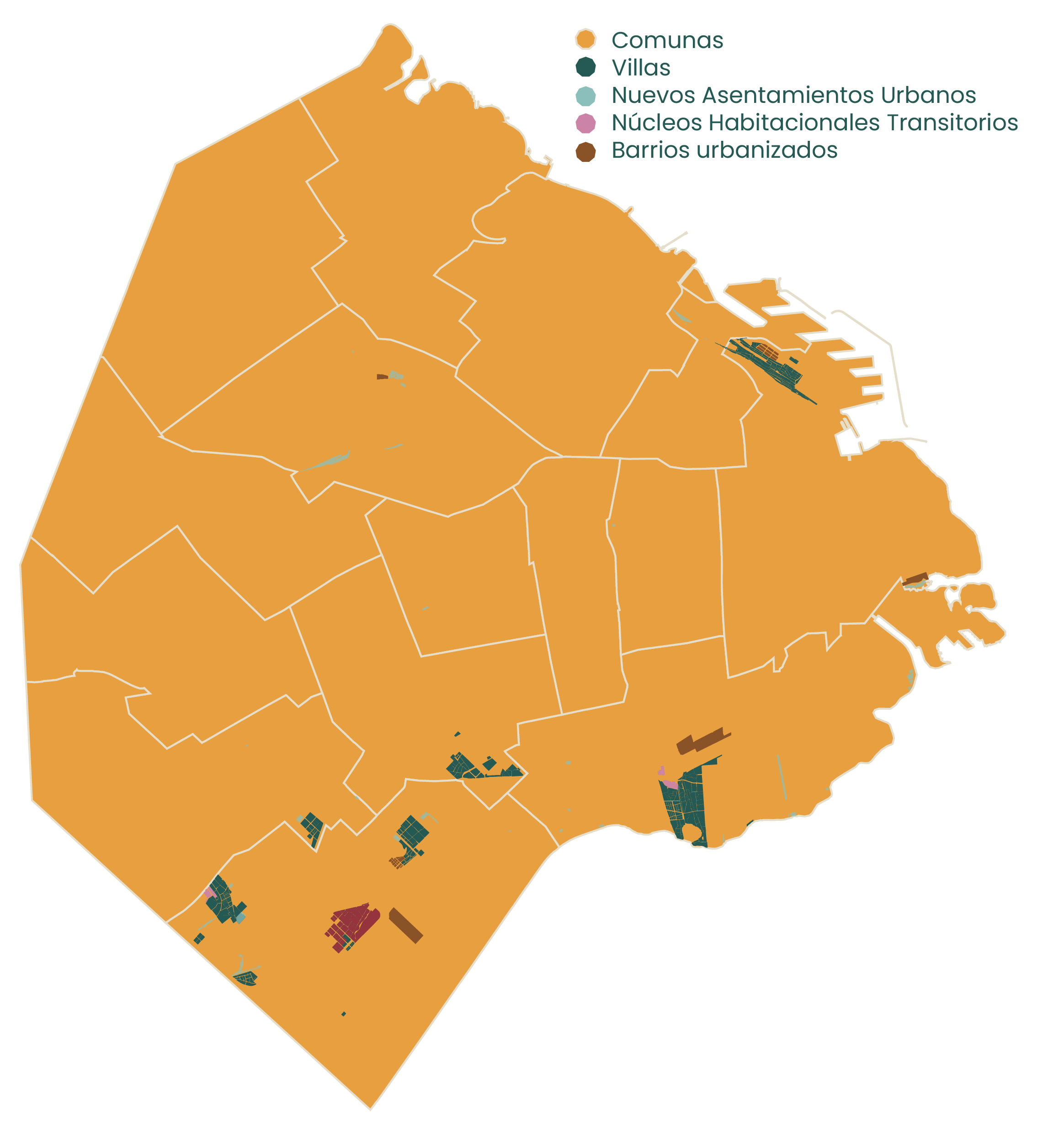Buenos Aires, Argentina
The Autonomous City of Buenos Aires (CABA) is the Federal Capital of Argentina and the largest city in the country. It is divided into 15 communes, which are decentralized political and administrative management units. Its population density is about twice that of Sao Paulo and Medellin, making it one of the cities with the highest percentage of urban population in Latin America.

Villa 20
There are two typologies that resemble the Brazilian favelas or invasions in the city of Medellin: Villas and Nuevos Asentamientos Urbanos (NAUs), which are newer and generally smaller than the former. Most of them are located in the southern part of the city, especially in Comuna 8. In the Autonomous City of Buenos Aires, there is no typology like the irregular allotments of Sao Paulo or the pirate allotments of Medellin, only outside the city limits.
The population of precarious settlements in the Autonomous City of Buenos Aires has grown significantly since 1983. The Instituto de Vivienda de la Ciudad (IVC) recognizes 53 precarious settlements – 17 villas, 34 NAUs, 2 Transitory Housing Developments (NHTs) – as well as 7 “urbanized neighborhoods”, i.e. housing developments intended primarily for the resettlement of families displaced during the redevelopment of villas and NAUs.
A survey conducted by a group of popular organizations in 2021 identified about 400,000 people, or about 13% of the city’s population, living in the 50 or so neighborhoods mapped by the National Register of Popular Neighborhoods (ReNaBaP).
The villas, villas miseria ou villas de emergencia are informal urbanizations (or self-urbanizations) resulting from the occupation of vacant land, characterized by very irregular urban layouts, precarious housing and high population density, in areas of scarce urban land and good location relative to centers of production and consumption, and on tax-owned land.
The New Urban Settlements are informal settlements that have emerged since the economic and political crisis of 2001 or were not recognized by the municipal government until then. They are generally located in areas that are more difficult to urbanize and consolidate than villas, such as railroad embankments, highways, old factories, and garbage dumps.
The Transitory Housing Developments are temporary shelters built at the end of the 1960s as part of the policy to eradicate the villas, which ended up becoming permanent.